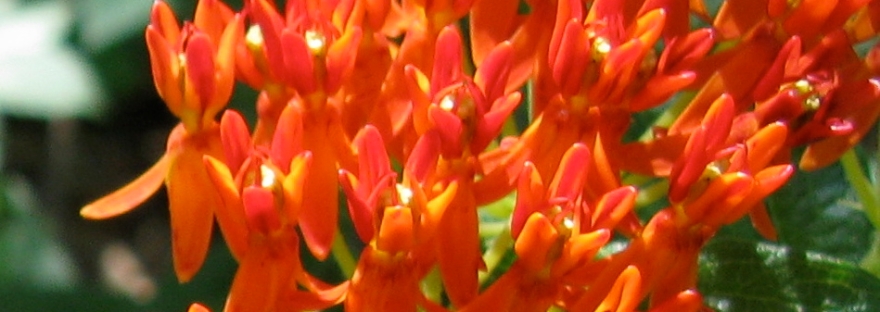“How do I get rid of weeds in my garden?”
This is probably the most common question I get on my blog, website, and Facebook page, usually coming from someone wanting to garden organically and frustrated there’s not a fast, easy recipe for weed elimination. It’s sort of like my inability to lose a few pounds. It’s not truly an inability. I want an easy way without having to change anything. A shortcut. My problem is not the weight. I need to change my entire approach. A healthier lifestyle. Organic gardening only works when the approach is a healthier garden; not just organic plants but an organic environment, one where nature is in balance. There’s no short -or HORTcut. It’s simple, but not easy. And there will be weeds.
What are weeds anyway? One person’s weed is often another person’s flower.
Or even food.
Since I’m a wildflower fanatic and native plant lover who also tries to grow as much food as possible for us and wildlife, I look at it a bit askew. For me, a weed’s a plant I’ve not found a use for yet that’s trying to crowd out one that I have found useful. George Washington Carver said, “A weed is a flower growing in the wrong place.” Many of our weeds have BECOME WEEDS because they are non-native, invasive species. But how do you make sure you have the plants you want in the right places? Here are 3 tips I’ve found to low-maintenance organic gardening that might help.
- CHECK IT OUT. What and where are the weeds plaguing your garden? Use the weeds as your clue. Dogged by dollarweed ? It LOVES wet spots. Nutty from nutgrass/sedge? It’s kissing cousins to papyrus and other sedges that – like dollarweed – prefer to have wet feet. By identifying your weed first, you should be on the right track to taming the beast.
- CHANGE IT UP. If your weeds are moisture hogs, adding a bit of sand to improve drainage might do the trick, raising the soil level just enough to make the weeds less comfortable. If your particular genre of weed loves shade, open the canopy of the area by removing lower tree limbs. If it’s a sun lover, pile on the mulch or mow the grass higher, making it difficult to find its way to the sunshine.
- CHOKE IT OUT. Some weeds are prolific because they can. If weeds are in your lawn, make sure your grass is fat and happy by adding composted materials and sufficient water. If they’re taking root in a flowerbed, heavy mulch (I use pine straw since I live in a pine forest) should do the trick. Having shrubs and perennials spaced at proper intervals leaves no open range for weeds. Having raised beds often alleviates weed issues, too. I use several methods to remove weeds in beds, including old-fashioned weeding (I have a special tool for this), hot water, or vinegar – depending on where it is and the time of year. I’ll save these for another post.
Nature truly abhors a vacuum. So the key to successful organic gardening is filling the space with what you choose, not what chooses to grow there. The other key? Tolerance for nature. It’s pretty natural, after all. And certainly organic.


